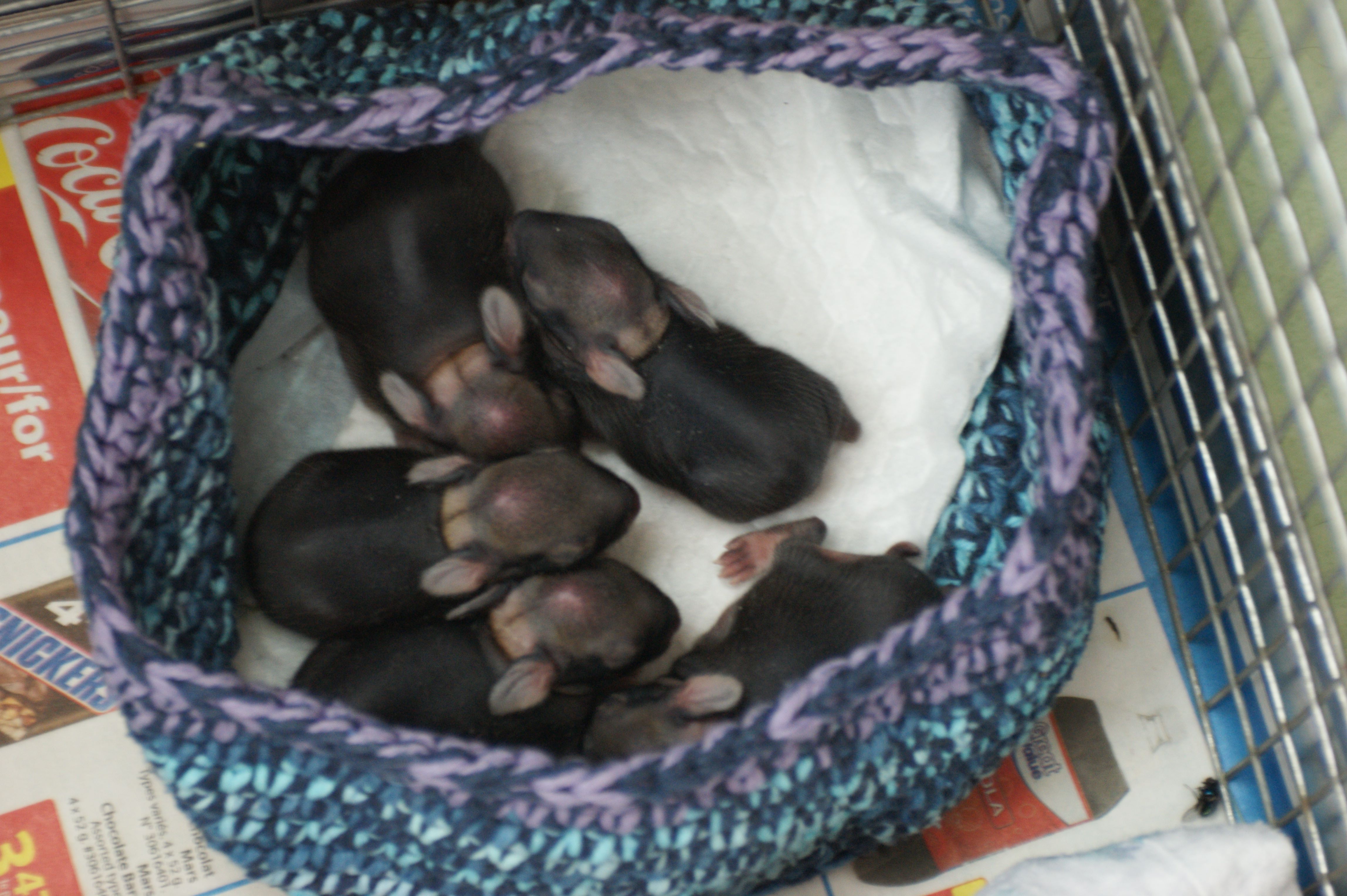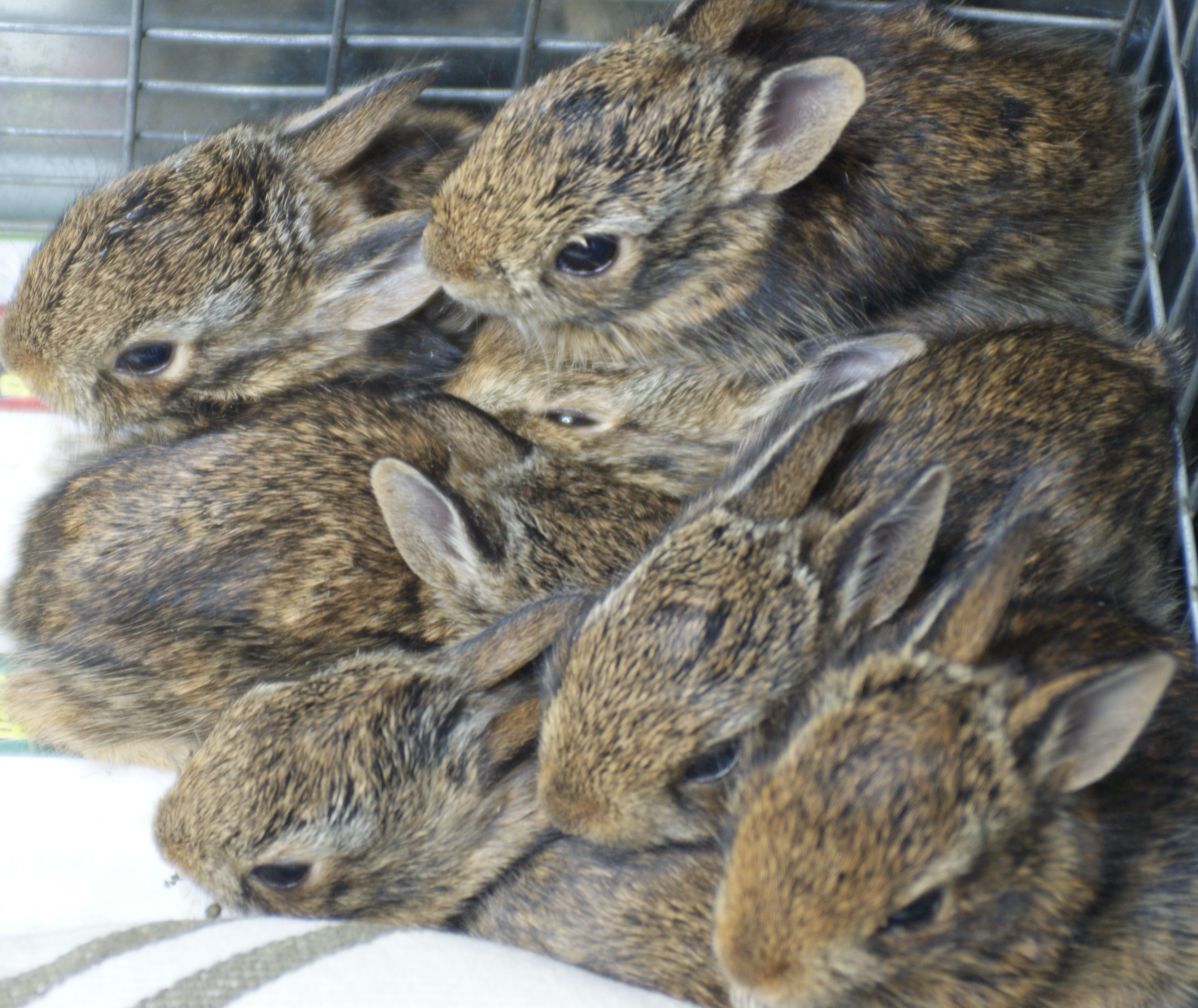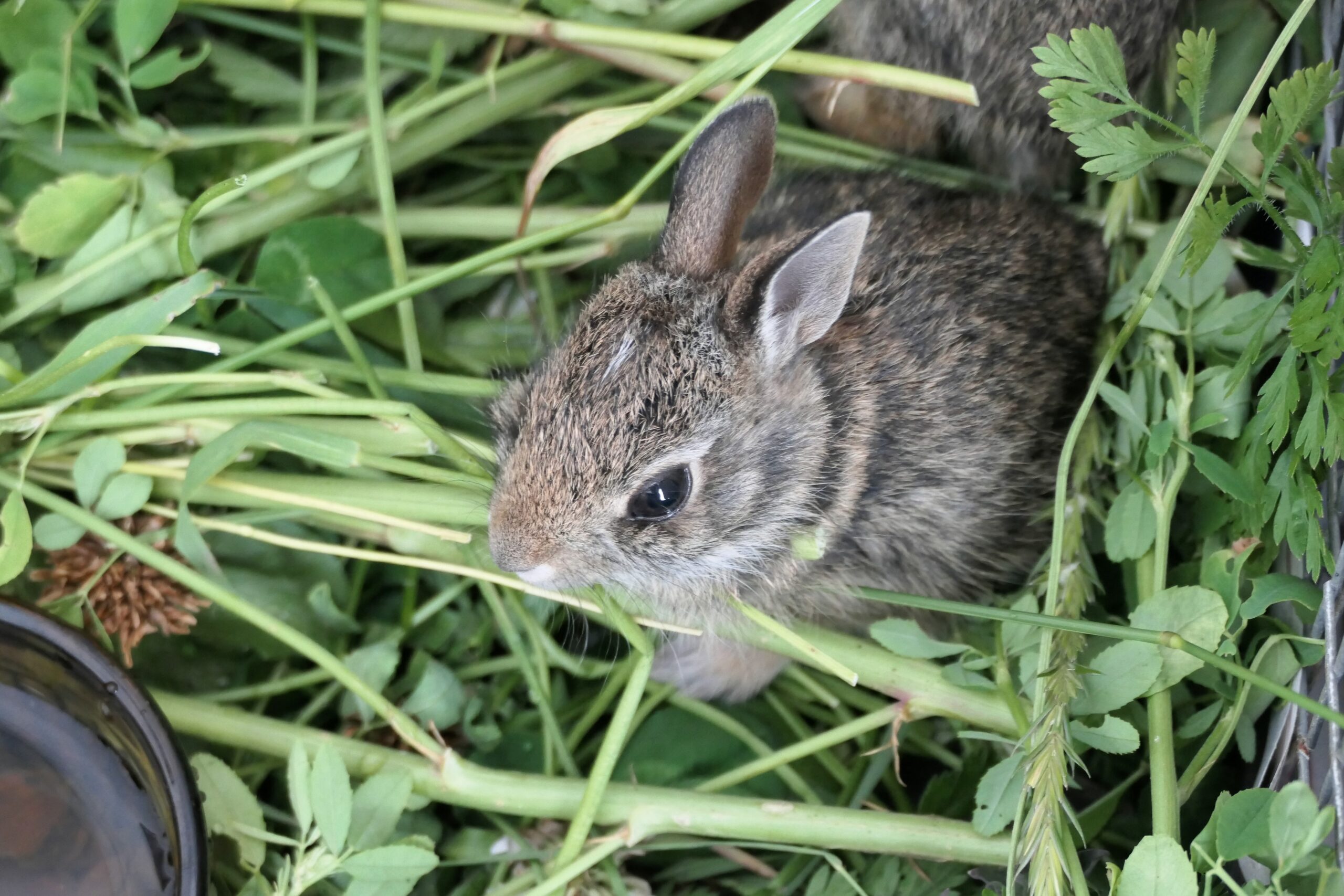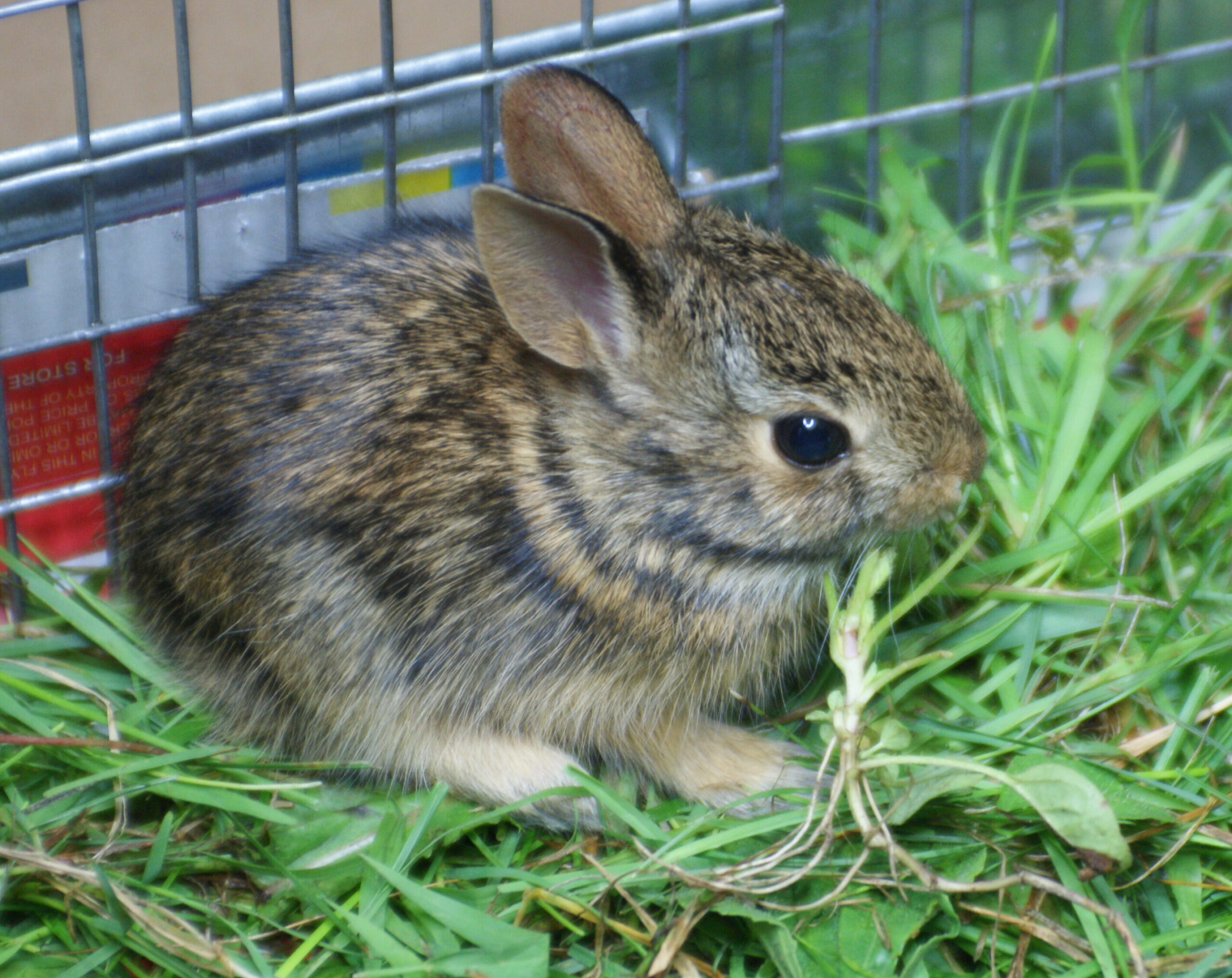Caring for Abandoned Wild Baby Bunnies
Have you found very young rabbits that appear to be in distress? Have you confirmed they have been orphaned or abandoned?
If so, now it is time for you to act by following the wild baby rabbit care suggestions below …
IMPORTANT NOTE
Wild kits (baby rabbits) are VERY difficult to raise in captivity. They have very delicate gastro intestinal (GI) tracts and will suffer a long, painful death if the balance in the GI tract is not maintained. Also, when they are found, these wild orphans aren’t typically healthy enough to be able to digest food properly. Feeding them at this stage can lead to fatal problems hours, days, even weeks later. Therefore, please do not give wild kits anything to eat or drink for ANY reason.
Rather than trying to find the species-specific formula, grasses, heating pad, additives, medications, feeding equipment, scales, housing, electrolytes, etc., that the kits will need depending on their age, condition and health issues, it would be best for the animals if you spent this time looking for a rehabilitation facility (rehabber) which can accept them. If you have to leave a message, don’t wait long for a reply. Please phone another rehabber until you can find someone who will agree to admit your animals. You will serve these animals much better if you put all your efforts into finding a rehabber and subsequently dropping off the babies at the rehabilitation facility rather than trying to raise them yourself.
Unfortunately, there is a LOT of misinformation on the internet about what and how to feed wild kits from what appear to be very knowledgeable sources. Please don’t be fooled into trying to look after them by getting advice from these ‘experts’. It is not fair on the animals to subject them to this kind of experimentation.
The best thing you can do for them is find a rehabber who consistently successfully raises and releases wild kits. And once you have found a rehabber, please inform all the other rehabbers you contacted that you have found someone who will admit your animals. Rehabbers spend a lot of time returning numerous calls and emails only to find out that their help is no longer needed. This time would be better spent looking after their other wild charges so a quick email or phone call from you to cancel your request for help would be very much appreciated. Thank you very much.
Initial Care Instructions
The wild rabbit care instructions below will guide you through the brief interval between finding the abandoned bunnies, contacting us for drop-off arrangements and transporting them to our Rescue.
Preparation
- For the sake of the wildlife babies, wash your hands before handling them. For your sake, wash your hands again when you are finished.
- Wear sterile, disposable (latex/nitrile) gloves.
- Until you can get him into a covered box or carrier, warm the baby by making a nest of your hands. Keep the baby covered as young rabbits can very quickly leap out of your grasp if they are startled. Don’t worry, kits do not bite.
Bedding
- Use ravel-free material for bedding such as tissues or a shirt (no buttons). If you use white material it is easy to see if the babies urinate or defecate. Moreover we can use these waste products as indicators of the babies’ health.
- Please make sure there are no loose threads or holes in whatever bedding material you choose. Please do not use towels as bedding because most towels are made from materials that get caught in the bunnies’ claws and limbs. If available, certainly the best bedding is the mixture of fur and grasses left in the nest by the mother.
The Container
- Place the litter of bunnies in a pet carrier or opaque covered box with ventilation. The best container would be a cardboard box that can be left with us. Cottontails with eyes open are very susceptible to shock so the less they are handled or looked at, the better.
- Please close the container to ensure the bunny cannot jump or fall out of it. Rabbits can jump surprisingly high at a young age so the container MUST have a secure, closed top. No, the sides of a laundry basket are not high enough to hold a young rabbit. The sad tale of an injured baby rabbit being able to jump out of your laundry basket, fall to the floor and hide behind the washing machine is an event you do not want to experience.
- Leave the container in a warm, dark and quiet place away from pets and people until you can transport it to us.
- Please do not cause unnecessary stress by handling, talking or observing the bunnies. Sadly, this kind of stress can kill them because bunnies (both adults and babies) go into shock very easily. Stress can also cause gastro intestinal problems that result in death days after the stressor is gone. Finally, habituating them to humans can mean a death sentence when they are released back into the wild. They should never be tamed.
Warmth
- Keep the babies warm by putting the container half on and half off a hot water bottle or heating pad set to low. The babies must be able to move to and away from the heated area. Never place an animal directly on a source of heat.
- You could also fill a water bottle with hot water, cap it, then wrap it in a sheet or blanket. Brace it against the outside of the box so it cannot roll over the babies. Replace the water often to ensure it stays hot.
- Very Important: please offer the babies warmth (not too hot) at all times. You should do this from the moment you find them until you drop them off at our Rescue. For cottontials who are so young they do not have fur (neonates), the warmth is necessary to prevent hypothermia. For older cottontails (eyes open – juveniles), the warmth is necessary to reduce stress and thus prevent shock. Both hypothermia and shock are life-threatening conditions.
Feeding
- Never give the babies anything to eat or drink as they have extremely specialized feeding requirements and very delicate gastro intestinal tracts. If you feed them the wrong thing in the wrong way or at the wrong time the results can be devastating. The harmful effects of giving them something might not be apparent in the moment. However, such actions can cause internal issues that lead to an often painful death a few hours or even several days later. The best thing you can do when you find them is ensure they are truly orphaned, keep them warm in a quiet place and transport them to a rehabilitator as soon as possible.
Transport
- To reduce stress during transportation, gently cover the container with a dark towel or sheet to muffle exterior noises and reduce the light. Do not hold or watch the rabbit. The stress this causes can kill him.
- As noise can also be stressful, please turn off the radio and your cell phone. Do not talk and if possible leave your children and pets at home.
- If the container is made of a solid material, carefully secure it by fastening the car’s seat belt around it.
- Turn your car’s seat warmer on its lowest setting to keep the rabbit in the container comfortably warm (but not too warm). If the car is already hot, you do not need to turn on the seat warmer.
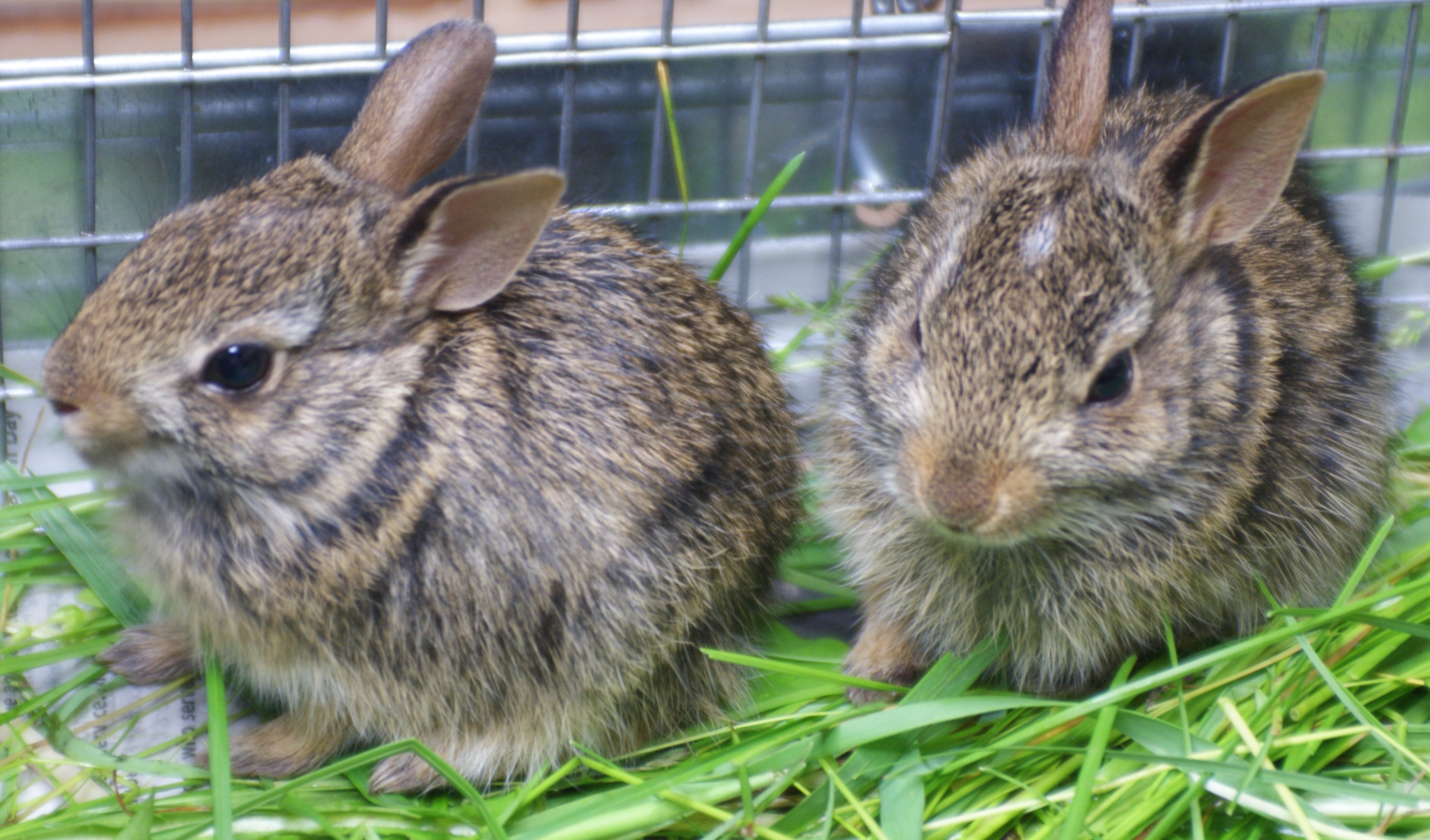
Some Additional Thoughts …
Be Gentle ...
Rabbits are very easily stressed, more so than most other wild animals. Therefore always be very quiet and gentle when working with them. Also, care for them in a dark, quiet room. It is important that you handle kits as little as possible. If you handle them too much this can cause them to go into shock and die. Never hold a rabbit only by his hind legs. If the baby tries to jump while being held improperly he could break his legs or back.
Be Careful ...
Do not critter-nap. If not injured, only abandoned neonates (hairless, eyes closed, ears flat, 3 inches) and abandoned juveniles (fully-furred, eyes open, 4 inches) need our help. Please do not approach any healthy rabbit who is over 120 grams, very active and afraid of humans. Young adults (5 weeks old or more) that are about the size of a small woman’s clenched fist have a much better chance of survival if left alone.
Be Informed ...
As tempting as it is to try to raise the wild rabbits yourself, please remember they require very specialized care and food. Their mortality rates in captivity are very high. Additionally, feeding young ones is a very time-consuming task. Finally, in Ontario it is illegal to keep wild rabbits if you don’t have a Wildlife Custodian Authorization permit. This permit can be obtained from Ontario’s Ministry of Natural Resources (MNR).
If you have determined a wild baby rabbit or litter needs help, please follow the rabbit care suggestions given above. They outline what you need to know about caring for baby wild bunnies in the short term. Then please Contact Us to make drop-off arrangements.

